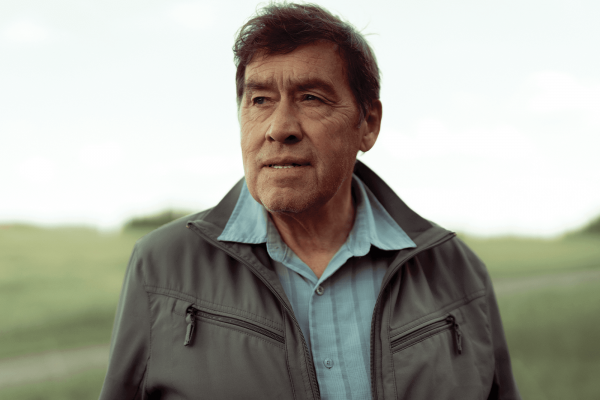IN APRIL, Pope Francis made a long-awaited apology to a Canadian delegation of Inuit, First Nations, and Métis leaders at the Vatican for the “deplorable” violations children suffered at Catholic-run Indian Residential Schools for more than a century. The pope committed to come to Canada in late July to make his confession personally to residential school survivors and their descendants for “the abuse and disrespect for your identity, your culture, and even your spiritual values.”
In this historic apology, Pope Francis stated, “Clearly, the content of the faith cannot be transmitted in a way contrary to the faith itself.”
This watershed moment comes 25 years after Harry Lafond—a Catholic and then-chief of the Muskeg Lake Cree Nation in Saskatchewan—raised issues of Indigenous faith and culture in a historic audience with Pope John Paul II during the Vatican’s 1997 Synod of the Americas. An educator and Catholic deacon, Lafond and his ancestors have a long history of building bridges between settler and Indigenous communities. J.B. Lafond, Harry’s great grandfather, was a spokesperson for Chief Keetoowayhow at the sixth of the 11 numbered treaties signed by First Nations with the Canadian Crown between 1871 and 1877. At the Treaty 6 table in 1876, J.B. Lafond negotiated with a British colonial government for relief from the flood of encroaching European settlers on the prairies. The parties were trying to avoid the violence waged against the Lakota, Dakota, and Cheyenne to their south. Though traditional Muskeg Lake Cree territory covered hundreds of square miles, Treaty 6 allotted a reserve of only 42 square miles.
Harry Lafond’s family has lived on the Treaty 6 reserve since then. He and eight of his 11 siblings attended nearby St. Michael’s (Duck Lake) Indian Residential School, run by the Roman Catholic Church.
In 1975, after marrying Germaine Laplante, a former Catholic sister of Métis (mixed European and Indigenous) heritage, Lafond worked as an educator and then served for a decade as chief at Muskeg Lake. Later, he directed the Office of the Treaty Commissioner of Saskatchewan, formed to bring Indigenous views of treaty covenants to the wider settler community. His tenure coincided with the years of Canada’s groundbreaking Truth and Reconciliation Commission (TRC).
In 2015, after six years of gathering testimony from across Canada, the TRC issued 94 calls to action to repair past and continuing damages wrought by the residential school system as an instrument of colonization. These included 10 calls directed toward churches, one of which demanded an apology from the pope on Canadian soil for abuses—which is being realized this summer, thanks to seeds planted by leaders such as Harry Lafond.
Today, Lafond continues to foster dialogue about what it means to be both Cree and Catholic. He works to renew Cree language and traditions among his people, while accompanying settlers interested in restorative solidarity. In May, the first federal study of Native American boarding schools in the U.S. identified more than 400 Indian Residential Schools and more than 50 associated burial sites. We interviewed Lafond in March and May 2022 by Zoom and email about his journey toward restorative justice and how the church might be replanted in Cree culture and land.—Elaine Enns and Ched Myers
Elaine Enns and Ched Myers: How did you feel when you heard Pope Francis’ apology in April to the First Nations delegation?
Harry Lafond: Pope Francis is an exceptional man with a very strong instinct to find the right path to the hearts of his visitors. I felt great hope and comfort that together we will find our way to wahkohtowin, Cree law for making relatives. And I recognize that it is an event that should have taken place 500 years ago.
Read the Full Article

